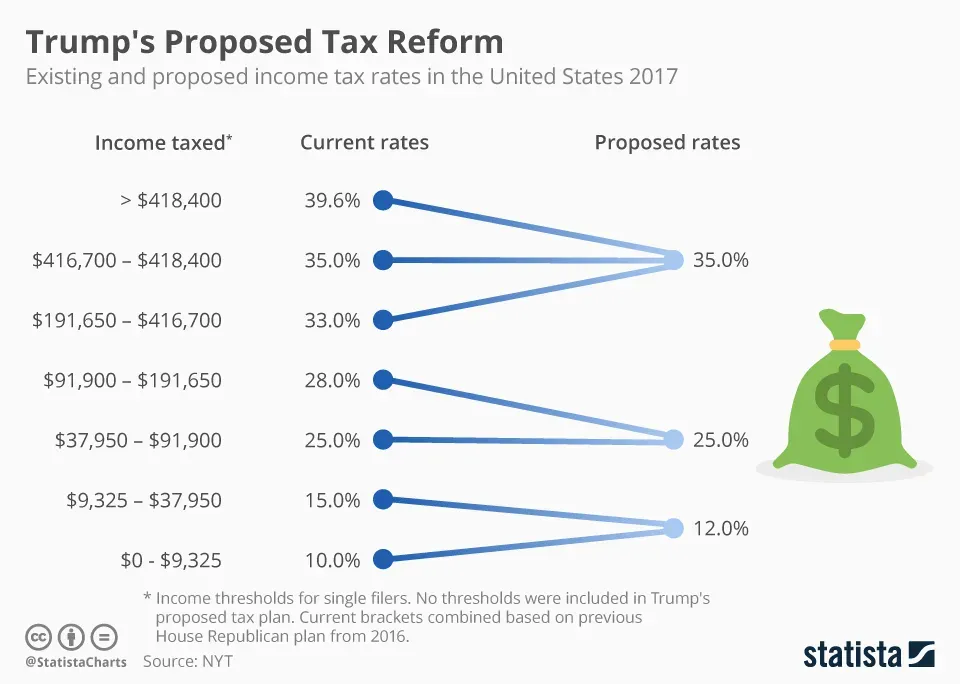Income Tax Reform has become a pressing topic in India, especially following the recent announcements under the NDA government budget. The Union budget revealed significant changes, allowing individuals earning up to ₹12 lakh annually to enjoy tax-free income, a considerable increase from the previous cap of ₹7 lakh. This move is part of a broader initiative aimed at providing middle-class tax relief, effectively putting more disposable income in the pockets of millions. Prime Minister Modi, during his recent speech, emphasized how these 2023 tax changes mark a transformative shift in tax policies compared to the past. By enhancing the income tax exemption thresholds, the government is not only encouraging savings but also fostering a conducive environment for greater financial stability among the middle class.
Taxation adjustments, often referred to as fiscal reforms, play a crucial role in shaping the economic landscape of a nation. Recently, the NDA government’s financial policies have focused on alleviating the burdens on the middle-income demographic, highlighting the importance of equitable financial practices. In the latest budget announcement, substantial increases in income tax exemptions signify a departure from prior frameworks that limited tax-free income significantly. These measures aim to empower households, allowing them to retain more of their earnings for consumption, investment, and savings. As India navigates these reforms, the changes are set to spark broader economic implications, impacting everything from spending habits to savings strategies.
Impact of NDA Government’s Income Tax Reform on the Middle Class
The NDA government’s recent income tax reforms have significantly altered the financial landscape for the middle class in India. By raising the tax exemption limit for individuals to ₹ 12 lakh, the government has effectively increased disposable incomes and empowered citizens to spend more freely. Previously, under the UPA regime, the income tax exemption ceiling was merely ₹ 2 lakh, which severely limited financial flexibility for many households. Now, with the introduction of the new tax regime, the middle class can keep more of what they earn, promoting a healthier economic environment.
Prime Minister Modi highlighted that these changes are not just about tax cuts but represent a broader commitment to economic empowerment. The reduction in tax burden, allowing for incomes up to ₹ 12.75 lakh to remain tax-free after standard deductions, encourages spending on essential goods and services. This, in turn, stimulates consumption—a crucial driver of economic growth. As a part of this fiscal reform, it is expected that the increase in disposable income will lead to enhanced savings and investments among the middle-class population, further bolstering the national economy.
Exploring the 2023 Tax Changes and Middle Class Tax Relief
The 2023 tax changes proposed in the Union budget present a significant relief for the middle class, aligning with the NDA government’s focus on economic growth. With the exemption limit now set at ₹ 12 lakh, individuals can enjoy more financial freedom and stability. These changes come at a time when many families are seeking to improve their standard of living, and by reducing their tax liabilities, the government aims to alleviate the financial pressures faced by millions. This tax relief will also allow families to redirect funds towards education, healthcare, and retirement savings.
In her budget speech, Finance Minister Nirmala Sitharaman remarked that these reforms are strategically designed to foster greater consumption. By increasing the income tax exemption threshold and ensuring that more take-home pay is available, the government intends to fuel economic progress. The middle class can now invest in their futures without the burden of excessive taxation. As noted in PM Modi’s addresses, these changes signify a transformative approach compared to the past, empowering citizens to make more substantial contributions to both local and national economies.
Comparison of Current Tax Structure to Previous Regimes
When comparing the current tax structure introduced by the NDA government to those of previous administrations, a clear shift towards middle class empowerment emerges. PM Modi emphasized that the earlier tax exemption ceiling under the UPA government severely restricted the financial growth potential of individuals. With the raise in the exemption threshold from ₹ 2 lakh to ₹ 12 lakh, it is evident that the NDA government is prioritizing the financial well-being of ordinary citizens. This stark contrast in policies not only shows a change in ideology but also underscores the government’s commitment to reform.
Such a significant increase in income tax exemption levels reflects a nuanced understanding of the dynamics affecting the middle class. While previous policies might have focused primarily on revenue generation for government projects, the current income tax reforms are specifically designed to enhance individual savings and investments. This shift from merely collecting taxes to facilitating better financial health for the populace showcases a more holistic approach to economic management by the NDA government.
Public Reaction to Income Tax Exemptions Announced
The income tax reforms announced in the recent budget have garnered a positive response from the middle class. Citizens are expressing appreciation for the newfound financial leeway that allows them to better manage their income and savings. With many families straining under rising costs and limited wages, these changes are seen as a much-needed relief. Public sentiment indicates that these reforms could enhance quality of life and promote confidence in the economic policies of the NDA government.
Moreover, social media and public discourse reveal a sense of optimism regarding the potential for increased purchasing power. As individuals begin to recognize the difference in their disposable incomes, the expectation is that this financial empowerment will translate into greater participation in the market. Ultimately, this wave of positive public reaction illustrates a growing alignment with the NDA government’s vision of nurturing an economically resilient, empowered citizenry.
Long-Term Effects of Tax Reform on Economic Growth
The long-term effects of the NDA government’s tax reforms on economic growth are anticipated to be substantial. By placing more financial resources in the hands of the middle class, the budget encourages increased spending, which is essential for driving domestic demand. The government is banking on this strategy to not only improve individual financial conditions but also to stimulate sectoral growth across various industries. Such economic activity will ultimately contribute to national GDP growth.
In addition, by promoting savings through practical tax exemptions, the reforms encourage households to invest more in mutual funds, insurance, and other wealth-generating opportunities. This cultural shift towards saving and investment can lead to sustained economic progress and stability. The government’s focus on balancing income in a manner that encourages upward mobility suggests a comprehensive approach that could yield promising outcomes in the future.
PM Modi’s Vision for Economic Development and Taxation
PM Modi has consistently emphasized a vision of economic growth that supports both development and individual prosperity. By reforming income tax structures, his government aims to create an ecosystem where citizens feel encouraged and supported to engage with the economy. The comparison to previous administrations serves to highlight the progress made and reinforces Modi’s narrative of active governance focused on the needs of the people. As he articulated in recent speeches, the tax reforms align with a broader vision of ensuring that public funds serve public interests.
Modi’s remarks also underline the importance of fair taxation as a tool for empowerment rather than merely a fiscal obligation. This approach aims to build trust among the populace and secure their participation in economic activities. The vision extends beyond immediate fiscal relief to encompass long-term goals of growth, productivity, and national advancement.
The Role of Economic Policy in Empowering the Middle Class
Economic policy plays a crucial role in empowering the middle class and shaping a nation’s growth trajectory. The NDA government’s recent income tax reforms exemplify this dynamic. By consciously making tax exemptions more generous, the government demonstrates an understanding of the pressures faced by this demographic. Such intentional policy shifts are thus instrumental in fostering an environment where the middle class can thrive, leveraging economic stability to enhance their quality of life.
Empowering the middle class through tax reform can lead to a cascade of benefits. Increased disposable income allows families to invest in education, healthcare, and savings, ultimately benefiting society at large. As the middle class becomes economically empowered, they contribute more significantly to the economy, leading to an enhanced standard of living, which is a common goal across political and economic paradigms.
Challenges Ahead for Effective Implementation of Tax Policies
Despite the positive outlook of the newly announced tax policies, challenges remain for effective implementation. There is a need for administrative efficiency to ensure that the reforms translate into actual relief for taxpayers. Bureaucratic hurdles can impede the benefits of tax reforms from reaching the intended audience. It is vital for the NDA government to address any gaps in execution to sustain public trust and maintain momentum for future reforms.
Additionally, the government must remain vigilant in monitoring the impacts of these changes on revenue generation. As projected losses from tax reforms could amount to around ₹ 1 trillion, it is essential to strike a balance between providing relief and retaining necessary funds for public services. Future adjustments may be required to ensure that economic growth is not stifled by reduced governmental capacity to deliver services and manage public infrastructure.
The Significance of Standard Deductions in Tax Relief
The inclusion of standard deductions in the new tax framework is a pivotal aspect of the NDA government’s strategy to provide tax relief. Allowing for a standard deduction of ₹ 75,000 for salaried individuals not only simplifies the tax process but also enhances the overall benefits of tax exemptions. This measure directly contributes to lowering the taxable income for countless individuals, bolstering the disposable income available for families.
Standard deductions serve to provide additional financial relief that resonates well with middle-class taxpayers. This structure is essential in rendering the tax code more equitable, ensuring that all taxpayers can avail themselves of these benefits without excessive complications. By alleviating the tax burden through the introduction of standard deductions, the government effectively encourages responsible spending and saving among citizens.
Frequently Asked Questions
What are the key highlights of the 2023 income tax reforms announced by PM Modi?
The 2023 income tax reforms include a significant increase in the tax exemption threshold for individuals. Under the new Union budget, income up to ₹ 12 lakh is now tax-free, a notable rise from the previous limit of ₹ 7 lakh. With a standard deduction of ₹ 75,000, this means individuals can earn up to ₹ 12.75 lakh without any tax liability.
How does the NDA government’s budget impact middle class tax relief?
The NDA government’s budget emphasizes middle class tax relief by increasing the income tax exemption limit to ₹ 12 lakh. This reform is aimed at leaving more disposable income in the hands of the middle class, allowing for increased household consumption and savings, thus fostering economic growth.
What was the income tax exemption limit under the UPA government compared to the current reforms?
Under the UPA government, the income tax exemption limit was only ₹ 2 lakh per year for individual taxpayers. In stark contrast, the current reforms under PM Modi’s NDA government have raised this limit to ₹ 12 lakh, representing a substantial improvement in tax relief for the middle class.
Are there any additional provisions related to income tax exemption in the 2023 tax changes?
Yes, the 2023 tax changes include an increase in the income tax exemption threshold to ₹ 12 lakh. Moreover, for salaried individuals, the inclusion of a standard deduction of ₹ 75,000 means that incomes up to ₹ 12.75 lakh are exempt from taxes, further benefiting the middle class.
How does PM Modi relate the income tax reforms to economic development?
PM Modi emphasizes that the income tax reforms carried out by the NDA government over the past decade are integral to economic development. By reducing income tax burdens and increasing disposable income for the middle class, these reforms aim to enhance household savings and consumption, ultimately fostering economic growth.
What did PM Modi say about the impact of income tax reforms on the middle class during his recent speech?
In his recent speech, PM Modi highlighted that the income tax reforms have significantly increased the disposable income of the middle class. He noted that the increase in the tax exemption limit to ₹ 12 lakh is a direct benefit, contrasting it with the UPA government’s policies, which limited tax exemption to only ₹ 2 lakh.
What is the estimated revenue impact of the 2023 income tax reforms?
The 2023 income tax reforms are expected to result in a loss of about ₹ 1 trillion in direct tax revenue for the government. This is primarily due to the increased tax exemption threshold aimed at providing more financial relief to the middle class.
How do the new tax structures align with the NDA government’s economic goals?
The new tax structures introduced in the NDA government’s budget align with their economic goals by providing substantial tax relief to the middle class, thereby increasing disposable income. This approach is anticipated to enhance household savings and boost overall consumption, contributing to sustainable economic development.
What role does the government see for technology in relation to tax policy?
The government recognizes that advancing technologies, particularly in areas like artificial intelligence, will play a significant role in shaping future tax policies. The establishment of a new centre of excellence in AI as part of the budget emphasizes the government’s commitment to integrating technology with economic strategies.
How can taxpayers benefit from the 2023 income tax reforms?
Taxpayers can benefit from the 2023 income tax reforms through increased tax exemptions, effectively allowing them to retain more of their income. With the new threshold of ₹ 12 lakh and the standard deduction, individuals and families can expect to see a higher disposable income, enhancing their financial stability and opportunities for savings.
| Key Points |
|---|
| NDA government increased the income tax exemption limit from ₹ 7 lakh to ₹ 12 lakh. |
| With a standard deduction of ₹ 75,000, individuals earning up to ₹ 12.75 lakh are tax-free. |
| Previous UPA tax exemption was only for incomes up to ₹ 2 lakh per year. |
| The reforms aim to boost household savings and consumption. |
| The government expects a direct tax revenue loss of about ₹ 1 trillion due to these reforms. |
| PM Modi emphasizes development through savings and public welfare initiatives. |
| Future focus on AI development as part of India’s technological aspirations and growth. |
Summary
Income Tax Reform has significantly transformed the financial landscape for the middle class in India. With the recent budget announcement, the NDA government has made notable changes that allow individuals earning up to ₹ 12 lakh to remain tax-exempt, showcasing a clear increase in the disposable income of the middle class. These reforms contrast starkly with the previous UPA administration’s limits, highlighting a commitment to economic growth and public welfare through enhanced household savings and spending.



